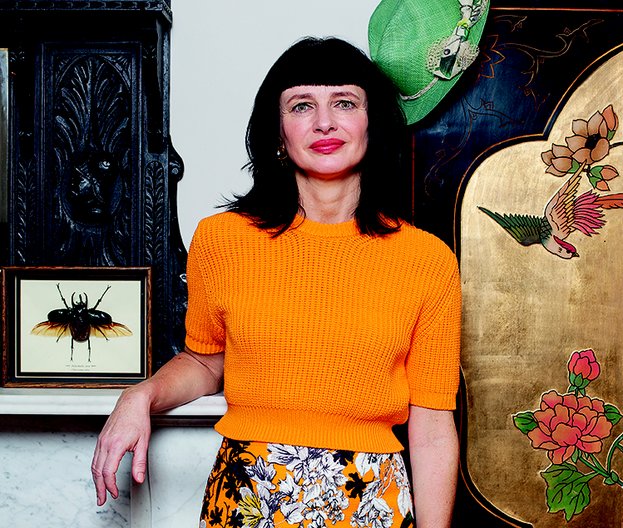
Carry Somers / © Red Magazine
17 July 2017
by Carry Somers
Earlier in June, Carry Somers, Founder and Global Operations Director of Fashion Revolution, was invited by the British Council to visit Uruguay and Argentina for a series of public programmes and meetings with sector partners in both countries. Below is Carry's report from her trip.
Before founding Fashion Revolution in 2013, I was a social entrepreneur working in the fashion industry, sourcing from Latin America for my brand Pachacuti since 1992. I am continually frustrated at seeing how often Latin America is left out of the conversation around sustainability and transparency within fashion supply chains, with most of the focus remaining on the key garment producing countries of S and SE Asia.
Argentina has a significant garment industry, supplying around 80% of the local market, but many garment factories are unregistered ‘en negro’ as opposed to working ‘en blanco’ where they have contracts, are paid social security and receive other legally mandated benefits such as holidays and sick leave. Beyond Argentina, many other countries, such as Mexico, Honduras and Haiti, supply large quantities of clothing to the US and other markets and experience the same well-publicised human rights and environmental abuses that we see globally in the fashion industry. As such, a conference such as MOLA, held in Montevideo in June, seems long overdue in order to highlight the problems and possibilities of the garment industry in the region.
MOLA brought together sustainable fashion entrepreneurs from across Latin America to promote sustainability, provide workshops and celebrate Latin American textile heritage. My presentation around transparency in the fashion industry, focusing in particular on the results of our Fashion Transparency Index, was very well received – my first ever standing ovation for a talk – and the many people with questions afterwards was an indication of the hunger for more knowledge in this area, particularly from small fashion brands who are trying to work sustainably and transparently. I hope this event establishes itself in future years as a key meeting point for all those in Latin America working towards a more sustainable fashion industry, showcasing innovation and promoting Latin America’s textile heritage and skills.
After Uruguay, I travelled to Argentina where I gave several talks, including presentations at INTI (Instituto Nacional de Tecnología Industrial), the Ministry of Modernisation and Ministry of Culture in Buenos Aires and at Trimarchi in Mar del Plata, an organisation which annually hosts Latin America’s most important graphic design convention.
In addition, I met two inspiring Argentinian fashion and textiles brands. Manto Abrigos is creating beautiful, stylish clothing with great integrity. In terms of traceability, they can frequently trace their fabrics back to the sheep who provide their wool. Manto Abrigo is a rarity: a combination of sustainability and transparency, yet incorporating innovation and fashion-forward design. I could have bought almost everything in the showroom! I then visited Feboasoma who call themselves a ‘laboratory of solid urban residues’ and are working to address the problem of the 180 tonnes of textiles discarded daily by the industry in Argentina. Their sound insulation panels, were some of the most innovative, artistic and exciting responses to textile waste I have seen. I left both companies feeling inspired that textile heritage, innovation, sustainability and aesthetics really do walk hand in hand in Latin America.